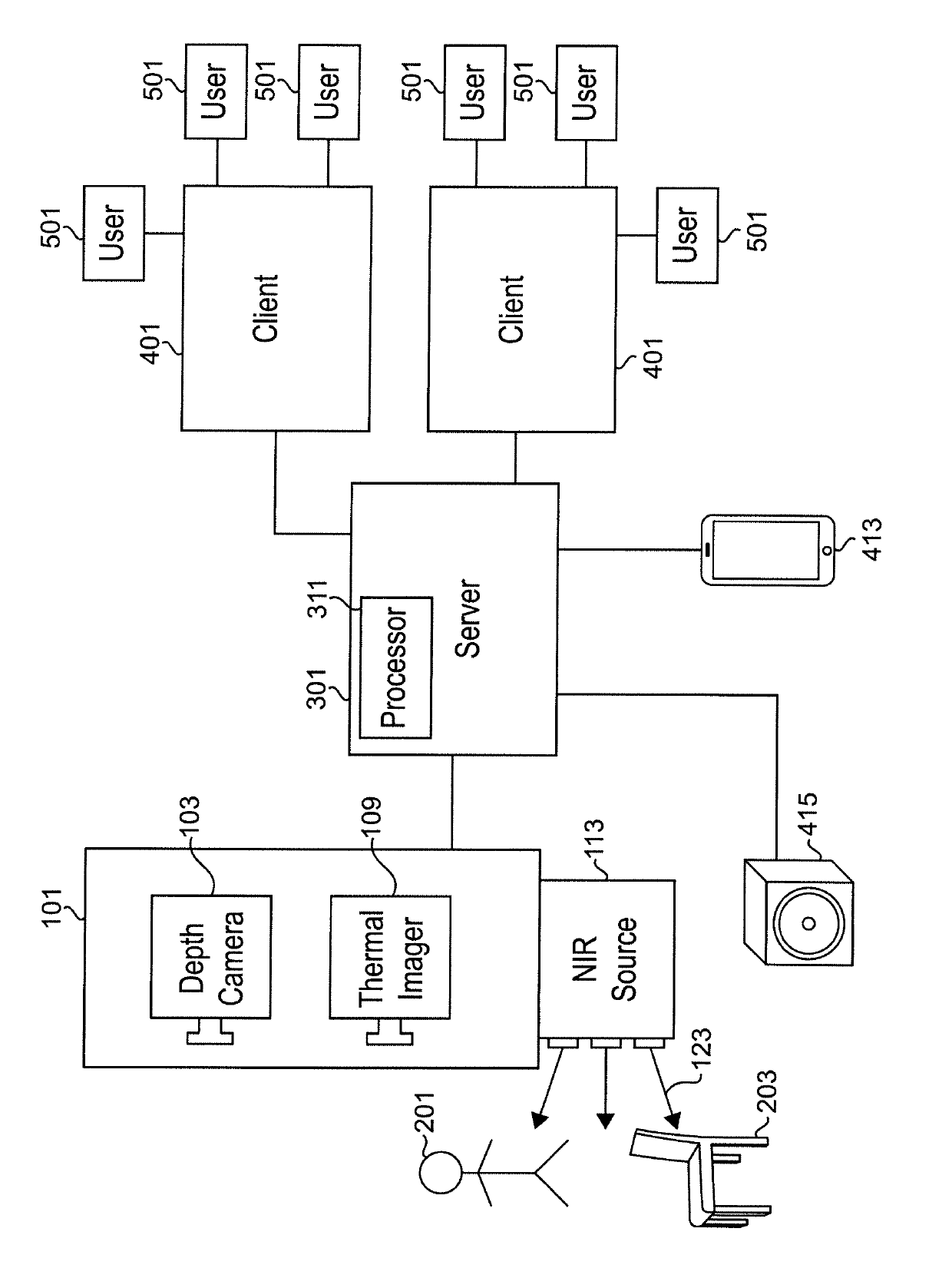Systems and methods for use in detecting falls utilizing thermal sensing
a technology of thermal sensing and fall detection, which is applied in the field of systems and methods for detecting falls utilizing thermal sensing, can solve the problems of difficult to believe that falling can be one of the most dangerous things that can happen to a human, the potential damage of a fall can go up dramatically, and the system is more accurate, so as to eliminate or reduce false negatives and/or false positives
- Summary
- Abstract
- Description
- Claims
- Application Information
AI Technical Summary
Benefits of technology
Problems solved by technology
Method used
Image
Examples
Embodiment Construction
)
[0023]Throughout this disclosure, certain terms will generally be considered to have certain meaning. While not limiting the definition of these terms as would be understood to one of ordinary skill, the following can assist in understanding the operation of the systems and methods.
[0024]The term “computer” as used herein describes hardware which generally implements functionality provided by digital computing technology, particularly computing functionality associated with microprocessors. The term “computer” is not intended to be limited to any specific type of computing device, but it is intended to be inclusive of all computational devices including, but not limited to: processing devices, microprocessors, personal computers, desktop computers, laptop computers, workstations, terminals, servers, clients, portable computers, handheld computers, smart phones, tablet computers, mobile devices, server farms, hardware appliances, minicomputers, mainframe computers, video game consol...
PUM
 Login to View More
Login to View More Abstract
Description
Claims
Application Information
 Login to View More
Login to View More - R&D
- Intellectual Property
- Life Sciences
- Materials
- Tech Scout
- Unparalleled Data Quality
- Higher Quality Content
- 60% Fewer Hallucinations
Browse by: Latest US Patents, China's latest patents, Technical Efficacy Thesaurus, Application Domain, Technology Topic, Popular Technical Reports.
© 2025 PatSnap. All rights reserved.Legal|Privacy policy|Modern Slavery Act Transparency Statement|Sitemap|About US| Contact US: help@patsnap.com

